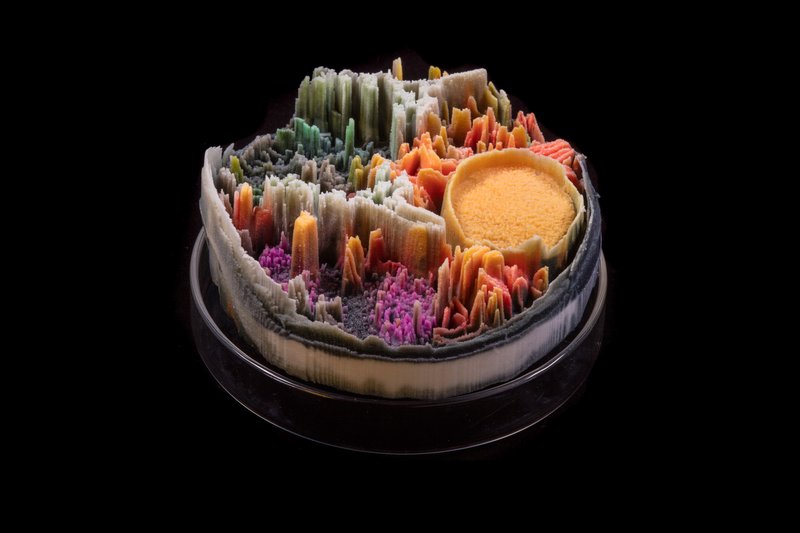
Plans for last year’s FACTT (Festival of Art and Science) 2020 had to be revised at the last minute due to COVID-19. This year, organizers were prepared so no in person sessions have to be cancelled or turned into virtual events. Here’s more from the Jan. 25, 2021 announcement I received (via email) from one of the festival partners, the ArtSci Salon at the University of Toronto,
Join us! Opening of FACTT 20-21 Improbable Times!
Thursday, January 28, 2021 at 3:30 PM EST – 5:30 PM EST
Public · Anyone on or off Facebook – link will be disseminated closer to the event.The Arte Institute and the RHI Initiative, in partnership with Cultivamos Cultura, have the pleasure to present the FACTT 2021 – Festival Art & Science. The festival opens on January 28, at 8.30 PM (GMT), and will be exhibited online on RHI Stage.
This year we are reshaping FACTT! Come join us for the kick-off of this amazing project!
A project spearheaded and promoted by the Arte Institute we are in or production and conception partners with Cultivamos Cultura and Ectopia (Portugal), InArts Lab@Ionian University (Greece), ArtSci Salon@The Fields Institute and Sensorium@York University (Canada), School of Visual Arts (USA), UNAM, Arte+Ciência and Bioscenica (Mexico), and Central Academy of Fine Arts (China).
Together we will work and bring into being our ideas and actions for this during the year of 2021!
FACTT 20/21 – Improbable Times presents a series of exceptional artworks jointly curated by Cultivamos Cultura and our partners. The challenge of a translation from the physical space that artworks occupy typically, into an exhibition that lives as a hybrid experience, involves rethinking the materiality of the work itself. It also questions whether we can live and interact with each other remotely and in person producing creative effective collaborative outcomes to immerse ourselves in. Improbable Times brings together a collection of works that reflect the times we live in, the constraints we are faced with, the drive to rethink what tomorrow may bring us, navigate it and build a better future, beyond borders.
Watch online: RHI Stage platform – http://bit.ly/3bWCT64 OR on the RHI Think app OR at Arte Institute and RHI Think facebook pages. https://vimeo.com/arteinstitute and youtube @rhi_think
January 28, 2021 | 8:30 PM (GMT)Program:
– Introduction
– Performance Toronto: void * ambience : Latency, with Joel Ong, Michael Palumbo and Kavi
– Performance Mexico “El Tercero Cuerpo Sonoro” (Third Sonorous Body), by Arte+Ciência.
– Q&AThe performance series void * ambience experiments with sound and video
content that is developed through a focus on the topographies and networks through which these flow. Initiated during the time of COVID and social distancing, this project explores processes of information sharing, real-time performance and network communication protocols that contribute to the sustenance of our digital communities, shared experiences and telematic intimacies.“El Tercero Cuerpo Sonoro” project is a digital drift that explores different relationships with the environment, nature, humans and non-humans from the formulation of an intersubjective body. Its main search is to generate resonances with and among the others.
In these complicated times in which it seems that our existence unfolds in front of the screen, confined to the space of the black mirror, it becomes urgent to challenge the limits and scopes of digital life. We need to rethink the way in which we inhabit the others as well as our own subjectivity.
IEither the RHI FACTT 2021 event page or the Arte Institute FACTT 2021 event page, offer a more detailed and, somewhat, more accessible description,
Program:
– Introduction
– Performance Toronto: Proximal Spaces
Artistic Directors: Joel Ong, Elaine Whittaker
Graphic Designer: Natalie Plociennik Bhavesh Kakwani
AR [augmented reality] development : Sachin Khargie, Ryan Martin
Bioartists: Roberta Buiani, Nathalie Dubois Calero, Sarah Choukah, Nicole Clouston, Jess Holtz, Mick Lorusso, Maro Pebo, Felipe Shibuya
– Performance Mexico Tercero Cuerpo Sonoro (Third Sonorous Body) by Arte+CiênciaFACTT team: Marta de Menezes, Suzanne Anker, Maria Antonia Gonzalez Valerio, Roberta Buiani, Jo Wei, Dalila Honorato, Joel Ong, Lena Lee and Minerva Ortiz.
For FACTT20/21 we propose to put together an exhibition where the virtual and the physical share space, a space that is hybrid from its conception, a space that desires to break the limits of access to culture, to collaboration, to the experience of art. A place where we can think deeply and creatively together about the adaptive moves we had and have to develop to the rapid and sudden changes our lives and environment are going through.
Enjoy!
